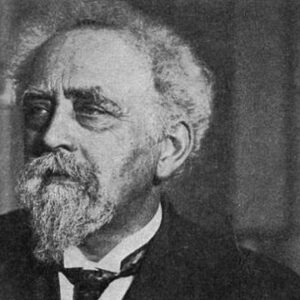In 1926, the Nobel Prize for Physics was given to a famous French physicist named Jean Baptiste Perrin. He started his career as a physics assistant. After he got his PhD, he was able to teach as a lecturer and then as a professor. Pierre Victor Auger, who is known as a physicist, was one of his students. As part of his research, he was able to prove the Brownian motion and the idea that matter is made up of atoms. Through his studies, he also found out the number of Avogadro’s units and the electric charge of cathode rays. A lot of people thought of him as the man who started the National Centre for Scientific Research. The Nobel Prize in Physics was given to Jean Baptiste Perrin for “his work on the discontinuous structure of matter and, especially, for discovering sedimentation equilibrium.” Based on the research he did, he had also written and published a number of books and dissertations.
Early years and childhood
Jean Baptiste Perrin was born in Lille, France, on September 30, 1870. His father was an army officer who was hurt in the Franco-Prussian War and died as a result. There were two of them.
He went to local schools all through school and got his diploma from the LycéeJanson-de-Sailly in Paris. After that, he had to serve in the military for a year.
He worked as an assistant in Physics from 1894 to 1897 and did research on cathode rays and X-rays. In 1897, he got his Ph.D.
Jean Perrin’s Career
He was first hired as a Physical Chemistry lecturer at the Sorbonne, University of Paris. He started working there as a professor in 1910 and stayed there until the Germans invaded France during the Second World War.
He did research on a lot of different things, but his first studies were about cathode rays, which he found to be made of particles with a negative charge. In 1895, he told people what he had learned from this study.
Albert Einstein published his explanation of “Brownian Motion” in terms of atoms in 1905. Jean Baptiste Perrin then did research to prove that Einstein was right, and in 1908, he was proven right. His experiments settled the atomic theory and put an end to the many arguments about how molecules really work.
His earlier work on the theory of particles let him figure out “Avogadro’s number (N),” which is the number of gram-molecules of a gas. Because of his experiments, the theory of “discontinuity of matter” was created.
He also studied the effect of X-rays on the conductivity of gases, the breakup of radium, how fluorescence works, and the release and spread of sound.
In 1919, he said that nuclear reactions could be a way for stars to get energy. In the 1930s, physicists Hans Bethe and Carl Friedrich von Weizsacker wrote about this in detail in a process they called “stellar nucleosynthesis.”
In 1927, he started the Institut de Biologie Physico-Chimique with physiologist André Mayer and chemist André Job. Edmond James de Rothschild, a member of the Rothschild family of bankers, gave money to the institute.
A few years later, in 1933, a French National Research Council was set up with the help of the French government. It had eight Nobel laureates on it. The French Central Agency for Scientific Research was set up by him three years later.
In 1939, the two organizations were brought together under the “Centre national de la recherche Scientifique” name. In 1937, he opened the Palais de la Découverte in Paris, which is a science museum.
During his life, he wrote a number of books and scientific papers. “Cathode rays and X-rays” (1897), “The principles” (1901), “Contact electrification” (1904-1905), and “Light and chemical reaction” were some of his most important papers (1925).
He wrote important books like “Principles of thermodynamics” in 1901, “Evidence of molecular reality” in 1911, “Matter and light” in 1919, “Transition chemical forms” in 1931, “The organization of scientific research in France” in 1938, and so on.
During World War II, the Germans occupied France in 1940, so he left France and moved to the United States. He lived the rest of his life in New York.
His Works of note
People remember Jean Baptiste Perrin for his research and studies on colloids and for helping to prove that the Brownian movement was real. Other important things he did for science studied the nature of cathode rays and prove that matter is made up of atoms.
Awards & Achievements
In 1896, the Royal Society gave him the Joule Prize.
In 1911, the Italian Society of Sciences gave him the Matteucci Medal.
In 1912, he won the Vallauri Prize from the city of Bologna.
In 1914, the Paris Academy of Sciences gave him the La Caze Prize.
In 1926, he was given the Nobel Prize in Physics.
Honorary doctorates were given to him by universities in Calcutta, Brussels, Ghent, Liege, Manchester, Oxford, New York, Princeton, etc., which are all well-known.
Personal History and Legacies
He didn’t believe in God and backed socialism.
Francis Perrin, Jean Baptiste Perrin’s 1901-born son, grew up to become a physicist.
He died in New York on April 17, 1942, when he was 71 years old. After World War II, his dead body was brought to France and buried at the Panthéon in Paris.
Estimated Net worth
The famous physicist Jean Baptiste Perrin was worth between $5 million before he died, according to Wikipedia, Forbes, IMDb, and other online sources.


